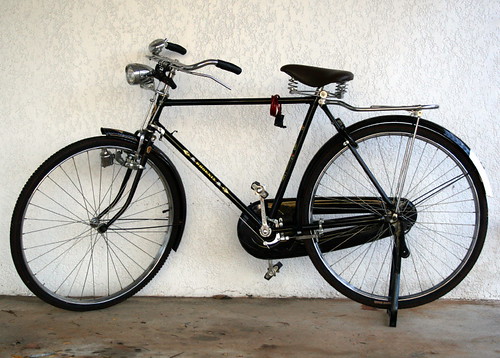It's not every day that we get to see the inaugural edition of a brand new UCI World Tour, and it's even rarer that such an event takes place in a nation that, until very recently, was so restrictive that the idea of a major international bike race taking place within its borders was all but unthinkable.
That's why the 2011 Tour of Beijing is a little bit special. What's more, with events such as this, the links between the Chinese people and the rest of the world are strengthened - and when that happens, as we saw in the old Eastern Europe, the iron fist with which the Chinese government still rules the populace and crushes dissent begins to rust (and as an example of that socio-political repression, it's quite likely that Cyclopunk will very soon not be making it through the Great Firewall of China which aims to prevent any website critical of the government finding its way into the country).
Of course, professional cycling isn't new in China - it was only three years ago that the nation hosted the Olympic Games. It also hosts no less than four of the 31 races making up the UCI Asia Tour, created by the cycling body in an attempt to sow the seeds of the sport outside of its European natural habitat (the others being the Tour of Hainan, the Tour of Qinghai Lake, Tour of South China Sea and the Tour of Taihu.
 |
| Develop your skills for 15 years on a bike like this+enter local races+get signed by a team+get given a modern carbon fibre bike=win loads of races. Bring on the Glorious Chinese Cycling Revolution! (from Through Balanda Eyes) |
China today is where Russia, Romania and East Germany were in 1990. Of course, professional cycling isn't new in China - it was only three years ago that the nation hosted the Olympic Games. It also hosts no less than four of the 31 races making up the UCI Asia Tour, created by the cycling body in an attempt to sow the seeds of the sport outside of its European natural habitat (the others being the Tour of Hainan, the Tour of Qinghai Lake, Tour of South China Sea and the Tour of Taihu, all of which increase its popularity among the nation's 1.33 billion population, creating new fans. Many of those are kids from poor families, boys and girls who are still riding heavy black bicycles that have more in common with a farmyard gate than the razor blades of carbon fibre that now dominate in the Tours, and they're going to look at cycling and think, "hey - I could do that!" and with the determination of hungry kids who have seen a way out of poverty, they'll practice on their agricultural bikes. Then they'll enter local races organised by people inspired by the UCI, where they'll get noticed by teams who will supply them with modern kit - and then, they'll do what the East Europeans did. There's a new revolution coming in the next decade, and professional cycling will be all the better for it.
 |
| National Stadium, Beijing (© Chumsdock Cheng CC2.0) |
The Stages
Race Map: click here
Stages and Profiles: click here
Stage 1 is a short 11.3km individual time trial from the National Stadium, more popularly known as The Bird's Nest, on the Olympic Green 8.23km from the Zijin Cheng Forbidden City in the city centre. It heads north into the Olympic Park, then back south and around the Stadium to the National Aquatics Centre, also known as theWater Cube - a flat, fast parcours with a number of tricky corners thrown in to keep things interesting.
Stage 2 once again starts at the National Stadium, but this time the riders head west out of the city looping into the beautiful countryside to the north-west of the city, then complete two short circuits, one long circuit and one medium circuit around Mentougou (if you're looking for it on Google Earth, try this spelling rather than the official itinerary's Men Tau Gou - or just search 39°56'23.51"N 116° 5'54.24"E) and three Category 4 ascents to 183m before reaching the finish line in the town after 133.5km.
Stage 3 brings the first of the proper climbs - three Cat 1s and a Cat 2 add up to around 1700m of skyward pedaling - that's comparable to an ascent of the Col d'Aubisque. The first sprint of the day takes place on an uncategorised climb 17km after the first Cat 1, beginning at 800m and reaching the highest point of the stage. The second sprint comes at the bottom of the steep descent that follows the first and is likely to be taken at blindingly fast speed. 162km long, the stage ends in Yongningzhen (Yongning in the roadbook, Yongning Town on the official race map). En route, we get our first look at China's most famous feature. the Great Wall.
 |
| Shunyi's whitewater course is considered exceptionally difficult, even by Olympic standards (© Gerry Boudens CC3.0) |
Stage 5 takes the race back onto the flats with twelve circuits beginning at Tian An Men Square in the heart of Beijing - at 440,000 m² (0.88km x 0.5km), the largest city square anywhere on Earth and ending with a triumphant return to the National Stadium.
 |
| Tian An Men Square |


No comments:
Post a Comment